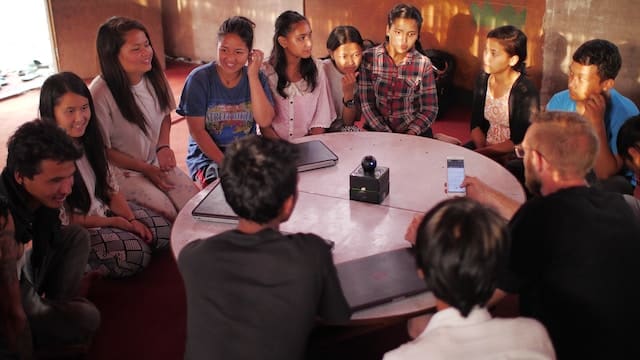Welcome, sports enthusiasts and community developers! If you’re wondering why those two seemingly unrelated subjects are being mentioned in the same breath, let us show you a fascinating connection. A somewhat overlooked area of exploration has been the role sports play in our communities. Beyond the thrill and excitement of the game, the influence of sports extends much further, contributing significantly to community development and social cohesion. Let’s dive in and explore this untapped potential together.
Sports: A Tool for Community Development
You might be wondering, how can sports contribute to community development? As a matter of fact, there are many ways in which sporting activities can be influential in this regard. A study conducted by a well-respected university revealed that sports could be employed as a tool for economic and social development within communities.
Lire également : The ethics of sports sponsorship: navigating controversial partnerships.
One of the primary ways is through the creation of infrastructure. The development of sports facilities, such as stadiums and training grounds, can provide the community with additional resources, boost the local economy, and create job opportunities. Furthermore, such facilities often become social hubs, encouraging community members to engage with one another.
In addition to infrastructure, sports can also promote public health. Physical activities involved in sports help participants maintain an active lifestyle, which is crucial in combating health issues like obesity, heart diseases, and mental health problems. The University research pointed out that communities with robust sports programs often report better public health outcomes.
Lire également : The use of music and sound in enhancing the sports fan experience.
The Role of Sports in Promoting Social Cohesion
The second significant advantage of sports is its capacity to foster social cohesion. Many of us have experienced the sense of unity and camaraderie that comes from cheering for our favorite sports team alongside fellow supporters. But this sense of community isn’t limited to spectators; it is also present among the athletes themselves.
Sports, by its nature, is a social activity. It brings people together, encourages them to cooperate, and creates a shared identity among the participants. This sense of belonging can strengthen the sense of community and promote social inclusion.
A cross-sectional analysis conducted by Google Scholar revealed that sports could be a platform for social integration and the formation of social networks. This is particularly true for communities with a high level of diversity. Sports provide a common ground where people from different backgrounds can come together, forge connections, and develop mutual understanding.
Moreover, sports offer an avenue for positive youth development. Participation in sports often instills core values such as teamwork, discipline, and responsibility among young individuals. These values not only help shape their personal growth but also have a positive impact on their social behavior.
How Sports Facilitates Public Inclusion
But how exactly does sports facilitate public inclusion? The answer lies in the universal appeal and accessibility of sports. Regardless of age, gender, or socio-economic status, virtually anyone can participate in sports, be it on a competitive or recreational level.
This inclusivity has been highlighted in a study sourced from Crossref, which demonstrated how sports activities serve as a tool for integration and social inclusion. Sports clubs, in particular, can provide a platform for individuals to interact with others outside their immediate social circle. This interaction fosters understanding and breaks down barriers, promoting a sense of unity within the community.
Furthermore, sports can be a powerful avenue for inclusion for individuals with disabilities. Participative sports provide an opportunity for individuals with disabilities to engage with their community, cultivate self-esteem, and challenge public perceptions.
Google and Scholar’s Involvement in Community Sports Development
Google and Scholar are not just names you associate with search engines or academia; they also play a significant role in community sports development. Google, for example, has initiated programs to promote digital literacy among coaches, athletes, and sport administrators.
Scholar, on the other hand, has been instrumental in conducting research and providing a wealth of academic resources on the impact of sports on community development. Through the publication of peer-reviewed articles, Scholar helps disseminate knowledge about the potential of sports as a tool for socio-economic development and social cohesion.
Conclusion
Sports aren’t just about competition, physical exertion, or entertainment. They play a far greater role in our communities than we often give them credit for. From contributing to community development to promoting social cohesion and inclusion, the impact of sports is both profound and far-reaching. There’s no doubt that sports have a significant role to play in making our communities healthier, more inclusive, and more cohesive.
Remember, the power of sports extends way beyond the pitch or the court. Whether you’re a player, a supporter, or a community developer, you can harness this power to cultivate a stronger and more connected community. So, let’s get out there, play some sports, and make a positive impact on our community!
How Sports Development Contributes to Health Promotion
One of the remarkable benefits of sports and physical activity in communities is its contribution to health promotion. Regular participation in sports activities leads to improved physical health, reduced risk of chronic diseases, and enhanced mental health. This relationship between sport participation and public health is well-documented in numerous academic papers available on Google Scholar.
Take, for example, a journal sport article on PubMed that examined the impact of community sports on public health. The research discovered that individuals involved in sports activities had better health outcomes and lower healthcare costs, demonstrating the potential of sports as a vehicle for health promotion.
In addition to physical health benefits, sports also offer mental health advantages. It helps reduce stress and anxiety, boosts mood, and improves sleep quality. Van Der, in his study, highlighted that sports can act as a coping mechanism for mental health challenges. By fostering resilience and a positive outlook, sport participation can enhance overall mental wellbeing.
Moreover, sports promote healthy lifestyles among children and adolescents. It encourages them to stay active, which is vital in preventing childhood obesity and other health-related issues. It also inculcates the habit of regular physical activity, setting them on the path towards lifelong health and wellness.
By creating a culture of health and fitness, sports can significantly contribute to public health promotion in communities. Therefore, investment in sport-based programs should be prioritized as a preventative health strategy.
The Role of Sports in Building Social Capital and Relationships
Sports aren’t just a pastime; they’re a catalyst for building social capital and enhancing social relations within communities. Whether you’re playing in a team or cheering from the sidelines, sports have a way of bringing people together and fostering a sense of belonging.
In the context of community sport, social capital refers to the connections, networks, and relationships formed through participation in sports activities. When people engage in sports, they interact with others, build relationships, and create a shared sense of community. This connection fosters mutual trust, cooperation, and shared norms and values, which are all elements of social capital.
One notable example of this is the Living Lab project. Conducted in various communities, the project utilized sports as a tool to enhance social capital. Through sports activities, community members were able to establish stronger social bonds, increase social participation, and cultivate a sense of belonging.
Moreover, sports can be instrumental in improving social relations among different community groups. It provides a platform where people from diverse backgrounds can come together, interact, and learn from each other. This interaction can break down social barriers, improve understanding, and foster inclusion.
In conclusion, sports play a crucial role in building social capital and enhancing social relationships within communities. By investing in sport development, communities can foster a positive social environment, promoting unity, mutual understanding, and social cohesion.
Conclusion
As we’ve explored, the impact of sports on community development and social cohesion is both significant and multifaceted. Sports aren’t just about competition or entertainment; they’re about bringing people together, creating healthier communities, and fostering social cohesion. From health promotion to building social capital, sports have a far-reaching influence that extends beyond the playing field.
Google Scholar and other academic resources have provided invaluable insights into this untapped potential of sports. By harnessing the power of sports, we as community developers, supporters, or players can cultivate a more inclusive, healthier, and cohesive community.
Indeed, the potential of sports to transform communities is profound. Whether it’s through a community sports league, a local training facility, or a professional sports team, we can all play a part in leveraging the power of sports for community development. So, let’s get out there, get active, and make a positive impact on our communities!






